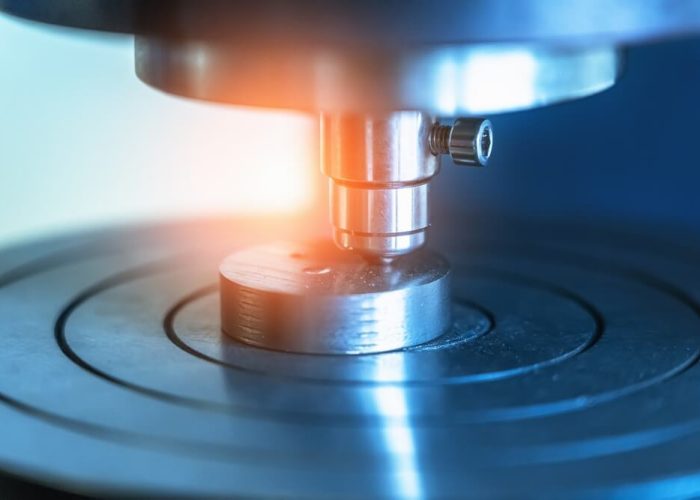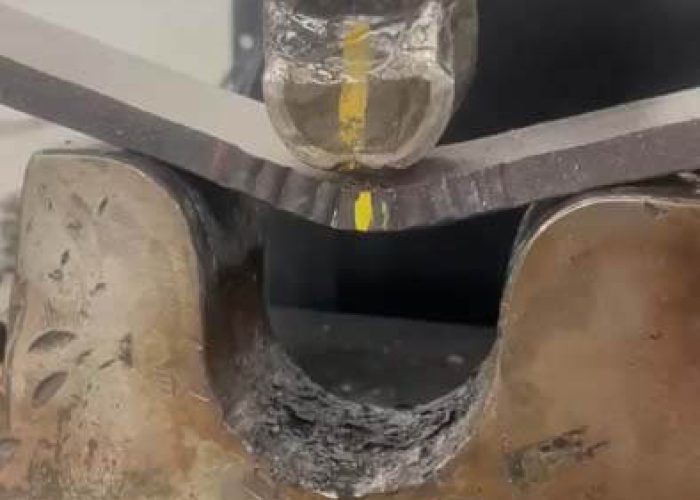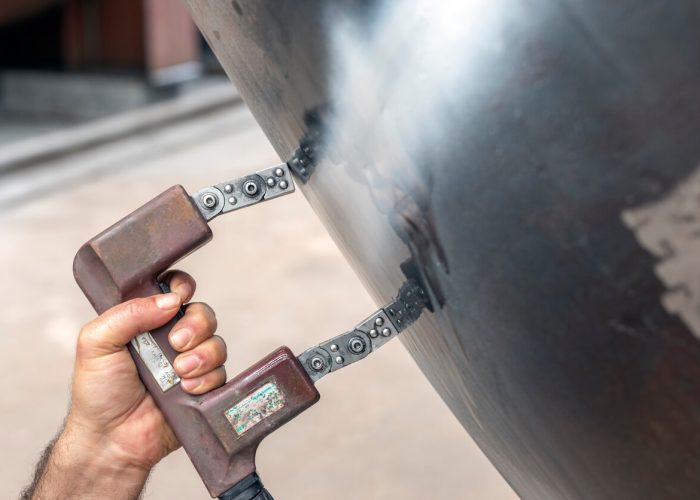The Crucial Role of Failure Analysis
Failure Analysis Labs: Expert Testing and Solutions for Various Industries
Our failure analysis lab offers comprehensive testing and analysis services to determine the root cause of equipment failures in industries such as power, petrochemical, and manufacturing. We specialize in metallurgical testing, non-destructive testing, and expert consulting to provide solutions for avoiding future failures.
Diverse Failure Analysis Services
We pride ourselves on offering diverse services that cater to the needs of many industries. Let’s delve into some of the key areas of expertise we can offer.
Metallurgical Testing
Our lab conducts comprehensive metallurgical testing to examine the properties and behavior of metals. From examining microstructures and investigating grain sizes to identifying defects and contamination, our experts meticulously analyze metal samples using advanced techniques, ensuring accurate results that inform critical decisions in industries such as aerospace and automotive.
Non-Destructive Testing (NDT)
This method allows us to assess the properties of materials and any potential defects without causing damage. Ultrasonic testing, magnetic particle testing, and liquid penetrant testing are just a few examples of NDT methods we employ to ensure structural integrity across various industries.
Materials Characterization
Carefully scrutinizing materials through various methods such as spectroscopy, microscopy, and thermal analysis allows us to comprehensively evaluate their physical, chemical, and mechanical properties. This plays a pivotal role in ensuring that quality standards are consistently met in manufacturing processes.
Forensic Engineering
Our experts specialize in applying engineering principles to investigate failures caused by human error, manufacturing defects, or system malfunctions. By conducting thorough investigations and using state-of-the-art technology, we provide invaluable support in determining the root causes of failures across different industry sectors.
Evaluation of Structural Failures
We possess a wealth of experience in evaluating structural failures in buildings, industrial facilities, and infrastructure projects. Whether it’s analyzing material degradation or determining design flaws, our insights contribute to preventing future failures and enhancing safety.
Electronic Component Failures
With an intricate understanding of electronic components and systems, our lab is adept at identifying the factors leading to electronic component failures. Such failures can be detrimental in industries like aerospace where precise functioning is crucial for safety.
Root Cause Analysis
Understanding why something went wrong is essential for preventing its recurrence. Our comprehensive root cause analysis focuses on uncovering underlying issues that contribute to failures and developing effective preventive strategies for future incidents across industries such as construction and manufacturing.
In essence, our failure analysis services are dedicated to bolstering the integrity and safety standards of various industries. By providing meticulous testing and evaluations across a broad spectrum of fields, we aim to serve as an invaluable resource for averting potential risks and ensuring optimal performance.
In serving the needs of diverse industries with our comprehensive failure analysis services, we now turn our attention to dissecting the causes behind industrial failures.
Decoding Causes of Industrial Failures
When something goes wrong with an industrial component, it can lead to significant financial losses and, in the worst cases, harm to people. This is where we come in. Our job is to figure out why things went wrong and what we can do to prevent it from happening again.
We get all kinds of problems coming in. Sometimes, materials crack or break after a while—even though they’re not supposed to! Corrosion can eat away at metal, weakening it until it’s dangerous. Then there are design flaws and manufacturing defects that sneak through and may not show up right away but become problematic later on. Environmental conditions can add another layer of stress to already struggling components.
Our goal is not just to figure out what went wrong but also to help improve products so they’re more reliable in the future.
For instance, let’s say an airline discovers a fatigue crack in a critical aircraft component. That’s something you want us to investigate, right? We would use advanced techniques such as scanning electron microscopy (SEM) and x-ray diffraction (XRD) to examine the material at a super-detailed level.
If we discover that the problem was caused by some kind of manufacturing defect or poor choice of material for the component, then we work with the manufacturers to figure out what changes need to be made in their production process or the materials they use.
Decoding the cause of these failures is like solving a puzzle. It takes a lot of skill and experience to identify what went wrong because the signs might not always be obvious at first look.
By identifying these factors and decoding their impact on industrial components, we play a vital role in preventing future failures and enhancing product reliability.
With a keen eye for detail and a commitment to improving industrial processes, our testing techniques stand as the cornerstone for ensuring product durability and performance.
Comprehensive Testing Techniques
In our line of work, a deep understanding of materials and their properties is paramount in uncovering the reasons behind industrial failures. Comprehensive testing techniques are like special tools in our arsenal, enabling us to analyze materials at a microscopic level to identify any anomalies or weaknesses that may have led to a failure.
One of the primary techniques we employ is metallurgical microscopy. This method allows us to examine the microstructure of materials, providing detailed insights into their composition and any potential defects that could have contributed to a failure. By studying the grain structure, inclusions, and phases present in the material, we can uncover important clues about its behavior under stress.
Another indispensable technique is scanning electron microscopy (SEM). SEM uses electrons to create high-resolution images of surfaces, giving us an incredibly detailed view of the material’s topography. This allows us to not only visually inspect the surface but also gather valuable information about its composition and elemental distribution. With SEM, we can pinpoint areas of interest for further analysis and gain a comprehensive understanding of the material’s condition.
Consider a case where a component suddenly fractured during operation. By utilizing SEM, we were able to identify a small crack at the fracture surface that was not visible to the naked eye. This discovery played a pivotal role in unraveling the root cause of the failure, leading to corrective measures that prevented similar incidents in the future.
X-ray diffraction (XRD) is yet another powerful tool in our testing repertoire. This technique aids in identifying the crystallographic structure of materials, allowing us to determine their phase composition with precision. By analyzing how X-rays interact with the atomic lattice of a material, we can elucidate its crystalline arrangement, which is instrumental in understanding its mechanical properties and performance under different conditions.
Moreover, spectroscopic techniques such as energy-dispersive X-ray spectroscopy (EDS) enable us to assess the elemental composition of materials by analyzing characteristic X-rays emitted from their atoms when exposed to electron beams. This provides invaluable data about the chemical constituents present in a sample, further enhancing our ability to diagnose failure mechanisms accurately.
Through these comprehensive testing techniques, we can effectively scrutinize the microstructure, chemical composition, and mechanical properties of materials, unlocking crucial insights that aid us in pinpointing failure mechanisms with remarkable accuracy.
Innovating Solutions for Failure Problems
When a product or component fails, there’s often more at stake than just the physical object itself. Failures in machinery and structures can lead to property damage, business interruption, pollution, and personal injuries. As a result, it’s crucial that failure analysis labs don’t just stop at identifying the issues; they must also provide innovative solutions that address these problems effectively.
Our approach involves going beyond simply patching up what’s gone wrong. Instead, we dive deep into understanding the root cause of the failure and then focus on proposing material and design modifications, process improvements, and quality control enhancements. By doing so, we aim to prevent similar failures from occurring in the future, helping our clients avoid costly downtime and potential hazardous situations that can arise from repeated failures.
For instance, if a critical component failed due to a specific material weakness, our team actively works on suggesting alternative materials with better properties that can withstand the operational stresses. This might involve finding stronger, more durable materials or reevaluating the manufacturing processes to ensure higher quality outputs.
To do this effectively, our lab merges expertise from multiple fields—including material science, engineering, and metallurgy. Collaborative discussions and joint problem-solving sessions help us offer holistic solutions that address both the immediate failure as well as prevent potential future issues from arising.
Additionally, our goal is not just to fix what went wrong but to continually improve our clients’ processes and products. We believe that each failure provides an opportunity for growth and learning. By innovating solutions to failure problems and implementing preventive measures for the future, we help our clients to build resilience into their systems and operations.
Our commitment to continual improvement drives our ability to innovate solutions for failure problems across various industries.
Research Inputs and Technical Support
The work conducted in our failure analysis labs extends beyond resolving specific cases. We are deeply committed to advancing engineering knowledge and contributing to the development of new, robust materials and components capable of withstanding the demanding environments of various industries. Our collaboration with industries allows us to understand their unique challenges and develop tailored solutions for them.
One way we contribute to advancing engineering knowledge is through conducting studies and publishing technical papers. These documents provide a wealth of information and insights that can benefit not only the industries we collaborate with but also the broader engineering community. By sharing our findings, we help others understand root causes of failures, best practices for material selection, and techniques for preventing common issues.
For example, if we discover a pattern of premature equipment failure in the manufacturing industry due to a specific type of stress corrosion cracking, publishing our findings can enable other manufacturers to proactively address this issue in their equipment design or maintenance procedures, ultimately preventing costly downtime and safety hazards.
Additionally, collaborating on R&D projects gives us an opportunity to apply our expertise and resources to develop innovative solutions. This often involves working closely with engineers and researchers from different industries to address specific technical challenges or to explore new technologies. Through these collaborations, we contribute valuable insights and technical support that propel the advancement of materials science and engineering.
These collective efforts lead to tangible outcomes such as the development of more durable alloys, enhanced fabrication techniques, and improved testing methodologies. The impact is not just limited to individual companies; it ripples throughout entire industries, driving progress and improving the quality and reliability of products.
The exchange of knowledge between our failure analysis labs and various industries is a two-way street. While we provide crucial research inputs and technical support, we also gain invaluable insights into real-world challenges faced by industries. This reciprocal learning process fuels continuous improvement in material design, manufacturing processes, and product reliability.
By fostering this symbiotic relationship between our expertise and real-world challenges, we pave the way for continuous advancements in understanding material behavior, optimizing manufacturing processes, and enhancing product reliability.
Investigating Materials and Components
Our labs are equipped with advanced instruments capable of observing and evaluating materials and components under different conditions such as temperature, pressure, and mechanical stress. By subjecting these materials to varying environmental factors, we can simulate real-world conditions and observe their behavior, ultimately providing our clients with valuable insights.
As we test these materials, we focus on understanding how they respond to stressors over time. This involves examining their structural integrity, wear resistance, and thermal properties. By doing so, we can identify potential weak points or failure modes in the material, enabling us to provide informed solutions for enhancement.
For instance, in the automotive industry, we may evaluate the performance of a specific alloy under severe heat conditions to determine its ability to withstand high temperatures without losing structural strength. This information is crucial for manufacturers looking to improve the reliability of their products in extreme environments.
Moreover, our analysis doesn’t just stop at identifying potential failure points; it extends to offering practical recommendations for improving material composition or design. By leveraging our expertise in metallurgical analysis and material science, we can advise on the modification of alloys or the implementation of advanced fabrication techniques to enhance material performance.
In essence, our thorough investigation procedures enable us to not only identify potential weaknesses in materials and components but also provide actionable recommendations for improving their reliability and longevity.
Failure Analysis and its Engineering Impact
Failure analysis isn’t just about identifying what went wrong; it’s about making things go right in the long run. The insights gained from analyzing failures have a long-lasting impact on engineering practices, ultimately leading to safer, more reliable products and systems.
Proactive Design: Thoroughly investigating failures enables engineers to understand their root causes and proactively incorporate preventive measures into the design phase of new products. This approach allows for the mitigation of potential failure points, leading to the development of inherently more robust and less failure-prone products.
Smart Manufacturing Practices: Data gathered from failure analysis guides improvements in quality control mechanisms within the manufacturing process. Manufacturers can refine their processes by incorporating lessons learned from failures, ensuring that every product meets rigorous standards before reaching the market.
Optimized Maintenance Strategies: Understanding the reasons behind component and system failures allows for the development of more targeted maintenance strategies. Maintenance programs can be fine-tuned to address specific weak points identified through failure analysis, leading to cost savings and minimized downtime.
From aerospace components to medical devices, failure analysis supports continuous improvement across diverse industries by fostering a culture of learning from mistakes and applying those lessons to drive innovation and progress.
To put it simply, failure analysis acts as a knowledgeable guide, helping engineering efforts steer clear of potential pitfalls while navigating toward smoother, more efficient operations.
This proactive approach imbues engineering practices with valuable insights garnered from analyzing failures, ultimately paving the way for the creation of safer products and systems equipped with greater resilience and longevity.
With a deeper understanding of how failure analysis shapes engineering practices and product development, it’s time to delve into the essential process of evaluating and interpreting failure results.
Evaluation and Interpretation of Failure Results
When it comes to analyzing why something failed, it’s not about assigning blame but playing the role of a detective, looking for clues and piecing together evidence to figure out what went wrong and how to prevent it from happening again.
Let’s start by breaking down the evaluation aspect.
The evaluation phase is akin to peeling back the layers of an onion – you need to dig deep to get to the heart of the issue. It involves a thorough review and analysis of data collected from various tests, observations, and experiments. This data is then examined meticulously to identify any pattern or anomaly that could be the root cause of the failure.
At this stage, our expert technicians apply their knowledge and experience to decipher the significance of each piece of information. For example, they may analyze metallurgical samples using advanced microscopy techniques or conduct non-destructive testing to detect hidden flaws.
This is where the expertise and precision provided by trusted labs come into play.
Providing Detailed Reports
The end result isn’t just a casual explanation—it needs to be detailed enough that anyone who reads it can understand what happened without having to ask any questions. That’s why we create comprehensive reports that include all the details from our investigation.
These reports are not just a jumble of words, but rather, they are structured documents containing a thorough description of the tests conducted, the data collected, accompanied by visual representations such as diagrams, photographs, and charts. These visuals help in making the findings more comprehensible and accessible to a wide audience.
For instance, a cross-sectional view of a metal fracture can help explain how cracks originated and propagated within the material. Visual representations act as powerful tools in conveying complex technical information in an easily understandable manner.
Actionable Recommendations
It’s not just about finding out what happened though; it’s also about figuring out what comes next. That’s why we provide actionable recommendations based on our findings.
These include specific steps and strategies that businesses can implement to prevent similar failures in the future. Our goal is to empower organizations with information that enables them to develop robust preventive measures and continuously improve their processes based on the insights gained.
For instance, if a failure was attributed to improper welding procedures, we would provide recommendations for improving welding practices or enhancing quality control measures to ensure similar issues don’t reoccur.
The process of evaluating and interpreting failure results is pivotal in understanding not just what went wrong, but also in providing valuable insights for preventing recurrence and driving continuous improvement within various industries.



